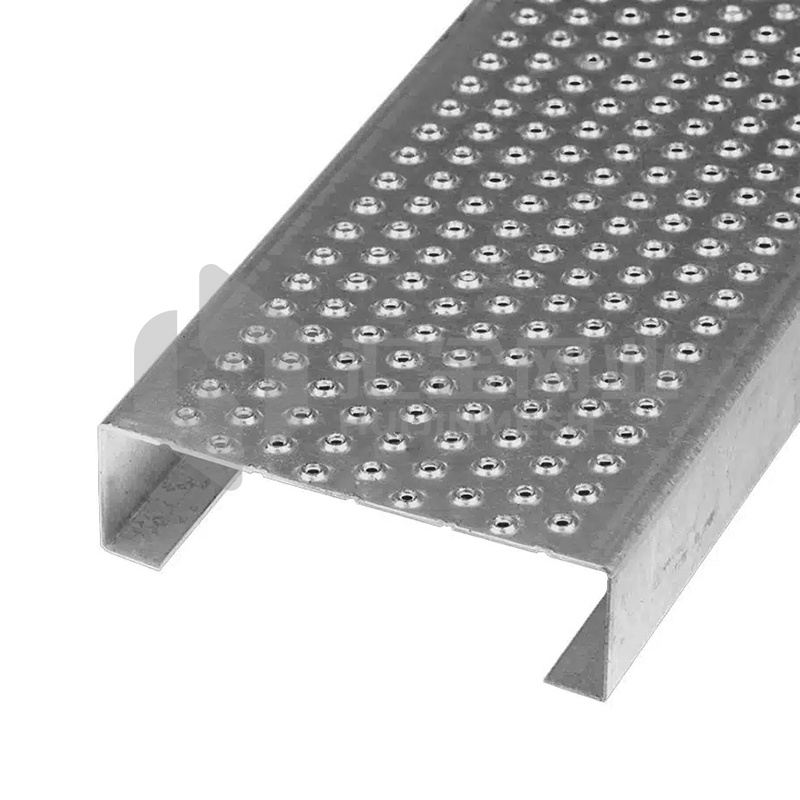
The Essential Guide to Safety Grating: Ensuring Security in Construction
Oct 23,2025
Safety grating, often referred to as safety grating panels or grids, is an essential component in construction and architectural projects, serving both functional and safety purposes. These grating systems are designed to provide a slip-resistant surface, allowing for safe pedestrian and vehicular movement in industrial and commercial spaces. Their unique design features open spaces that allow for drainage, air circulation, and light penetration, making them a versatile choice for various applications.
One of the primary advantages of safety grating is its ability to prevent slips and falls. When installed in areas prone to moisture or debris accumulation, such as walkways, staircases, and platforms, safety grating significantly reduces the risk of accidents. The textured surface enhances traction, providing stability even in wet or oily conditions. This characteristic is particularly beneficial in environments such as factories, warehouses, and outdoor areas where safety is paramount.
Safety grating is available in various materials, including fiberglass, aluminum, and steel, each offering unique benefits. For instance, fiberglass grating is lightweight and corrosion-resistant, making it ideal for chemical plants or coastal areas where exposure to harsh conditions is common. Steel grating, on the other hand, is robust and durable, suitable for heavy-duty applications where load-bearing capacity is crucial. Aluminum grating strikes a balance between weight and strength, making it a popular choice for pedestrian walkways and platforms.
In addition to enhancing safety, safety grating contributes to the overall design aesthetic of a space. Its modular design allows for customized layouts, accommodating different project requirements. Architects and designers appreciate the versatility of safety grating, as it can seamlessly blend into both industrial and commercial settings while ensuring compliance with safety regulations.
When considering the installation of safety grating, it’s important to focus on key factors such as load requirements, environmental conditions, and maintenance needs. Proper installation techniques and regular maintenance practices can significantly prolong the lifespan of the grating, ensuring continuous safety and performance.
In summary, safety grating is a vital element in the construction industry that enhances safety, functionality, and aesthetics. By offering slip-resistant surfaces and customizable designs, safety grating helps create safer working and walking environments across various applications. Whether for industrial sites, commercial buildings, or outdoor pathways, safety grating plays a crucial role in promoting safety and efficiency in construction and architecture.
One of the primary advantages of safety grating is its ability to prevent slips and falls. When installed in areas prone to moisture or debris accumulation, such as walkways, staircases, and platforms, safety grating significantly reduces the risk of accidents. The textured surface enhances traction, providing stability even in wet or oily conditions. This characteristic is particularly beneficial in environments such as factories, warehouses, and outdoor areas where safety is paramount.
Safety grating is available in various materials, including fiberglass, aluminum, and steel, each offering unique benefits. For instance, fiberglass grating is lightweight and corrosion-resistant, making it ideal for chemical plants or coastal areas where exposure to harsh conditions is common. Steel grating, on the other hand, is robust and durable, suitable for heavy-duty applications where load-bearing capacity is crucial. Aluminum grating strikes a balance between weight and strength, making it a popular choice for pedestrian walkways and platforms.
In addition to enhancing safety, safety grating contributes to the overall design aesthetic of a space. Its modular design allows for customized layouts, accommodating different project requirements. Architects and designers appreciate the versatility of safety grating, as it can seamlessly blend into both industrial and commercial settings while ensuring compliance with safety regulations.
When considering the installation of safety grating, it’s important to focus on key factors such as load requirements, environmental conditions, and maintenance needs. Proper installation techniques and regular maintenance practices can significantly prolong the lifespan of the grating, ensuring continuous safety and performance.
In summary, safety grating is a vital element in the construction industry that enhances safety, functionality, and aesthetics. By offering slip-resistant surfaces and customizable designs, safety grating helps create safer working and walking environments across various applications. Whether for industrial sites, commercial buildings, or outdoor pathways, safety grating plays a crucial role in promoting safety and efficiency in construction and architecture.






